My mudroom project was recently featured on Trish Holder’s blog, Greenspiration Home, and many of her readers commented that they were concerned about the health of my family after reading that I sanded the antique beadboard and floors, which may have contained lead paint.
It got me to thinking about all the safety measures we’ve taken in working with old wood.
Lead-Based Paint
The dangers of lead are well known so we take all necessary precautions in working with wood that has old lead-based paint.
For example, when sanding old wood, I use a hand sander equipped with a HEPA filter, and that filter is cleaned frequently. I forego the paper masks and use a NIOSH- or MSHA-approved respirator with high filtration efficiency that is specifically designed to protect against fine airborne contaminants. Also, 95% of the time, I’m sanding outside on a non-windy day to keep contaminants from entering our home.
Once the old wood is sanded to my satisfaction, I clean the wood and remove any dust by washing it with mild soap and a garden hose. This is also a good time to clean any gunk out of the grooves or around the tongue.
After it’s been thoroughly cleaned, I place the wood on an elevated surface and give it time to dry completely in the sun.
After installation, if there is still paint on the boards, as was the case for my mudroom ceiling and floors, I always apply a few clear satin polyurethane coats to seal the wood and prevent any chance of future exposure to flaky lead paint.
This step also has the added benefit of amplifying the richness of any remaining color. It makes a major difference as shown by the photos below.
Beadboard before polyurethane:
Beadboard after applying polyurethane sealant:
See the difference?
By the way, you may be wondering how we know that the wood contains lead-based paint.
It’s pretty simple to deduce. According to the EPA, any homes built before 1960 contain lead paint, and lead is still present in some homes built into the late 1970’s, when lead paint became illegal to sell or use. Because we’re interested in salvaging old growth lumber and other vintage materials, we tear down old homes built from the turn of the century into the 1930’s or so. So, it stands to reason that if wood is painted, it’s probably lead paint or milk paint.
To diagnose which type of paint is present, there are numerous lead-based paint diagnosis kits available that are easily found using any search engine.
Rusty Nails
If you deal with old wood like we do, there’s no doubt in my mind that you will come into contact with many rusty nails. And when I think of the health effects of rusty nails, I immediately think: tetanus.
I don’t know about you but the symptoms of tetanus don’t sound like a bit of fun to me. They include muscle spasms, difficulty swallowing, drooling, breathing problems, and excessive sweating.
Also, it would be a horrible way to die.
When I was researching this post, I learned that rust, in and of itself, does not cause tetanus, but rusty nails are a prime breeding ground for the bacteria, called Clostridium tetani, that causes lockjaw. It’s also found in soil and manure. (The latter includes dog, cat and rat feces.) And, one more “gotcha” that applies to Texas: it’s much more common in hot, humid areas.
Regardless of what I knew and when, when my husband and I started our business, we made sure to get our tetanus shots, and we’ll continue to get them every 10 years as recommended.
Splintery, Jagged Wood
Have you ever run your bare hand over a piece of wood and lived to regret it?
Honestly, I wouldn’t be a bit surprised if your answer is “yes”. I think we’ve all learned that lesson at one time or another.
Whether you’re working with old or new wood, it pays to protect your hands. Invest in a good first aid kit and good gloves like we do — we buy cases of them!
Protecting yourself from splinters and cuts may seem like a minor thing, but even a tiny splinter can hurt and make you think twice about working without hand protection.
If you religiously wear gloves like we do, you’ll rarely have a splinter. You may still get a splinter from time to time, and if you do, try one of these remedies. (I’ve personally used the tape method before. It works!)
Dirty Lumber
Dirty wood deserves a special mention.
Now, I realize that some of you may chuckle to read that I’ve included grungy wood in my list of safety precautions.
In addition to having a huge “ick” factor, dirty wood can make your life miserable if you suffer from allergies or asthma like I do.
Dust particles, molds and other fine pollutants can cause irritating and sometimes life-threatening health problems. Therefore, I always keep allergy medications, including eye drops, and an inhaler with me when I’m working with old wood.
We also have rags, soap, and clean water in jugs to wash our dirty hands and faces when needed.
I rest easy knowing that I have products on hand to prevent or lessen any allergic episodes from getting out of hand.
In closing, we should all be aware of the hazards of working with old materials. Your individual sensitivities, reactions to allergens, and overall health should be in the front of your minds at all times. We don’t need to be scared of working with old materials, just be safe when it comes to your personal health and safety.
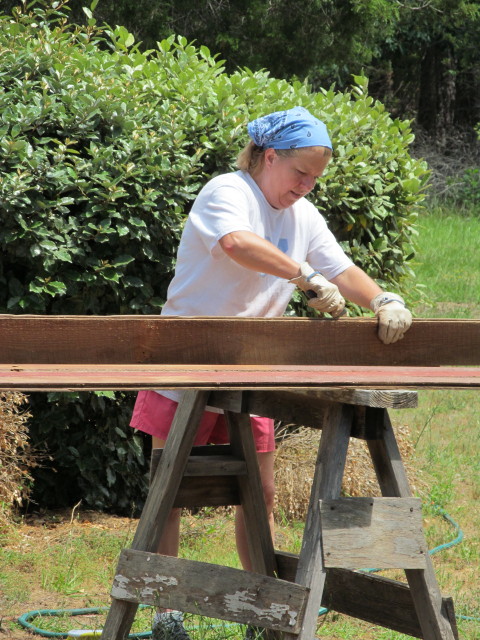
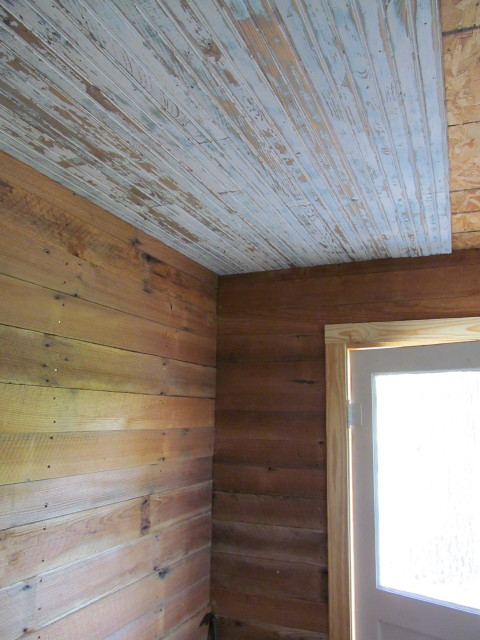
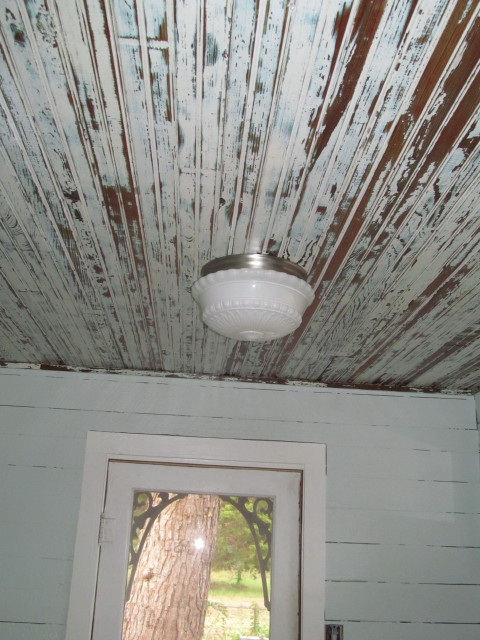
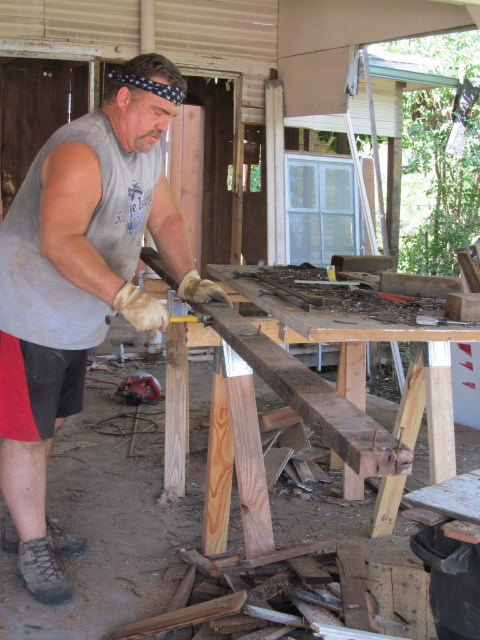
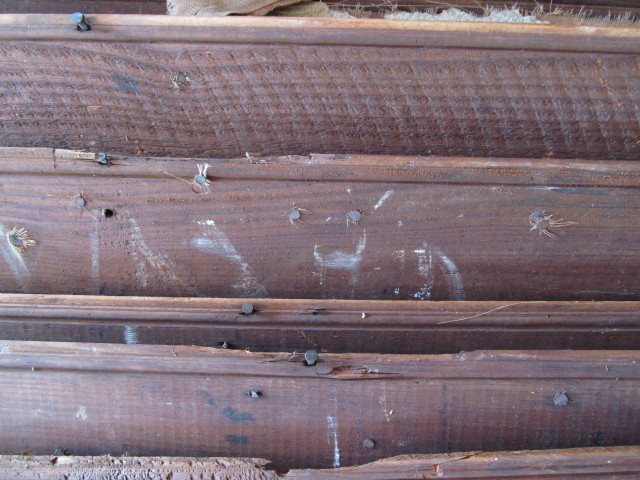
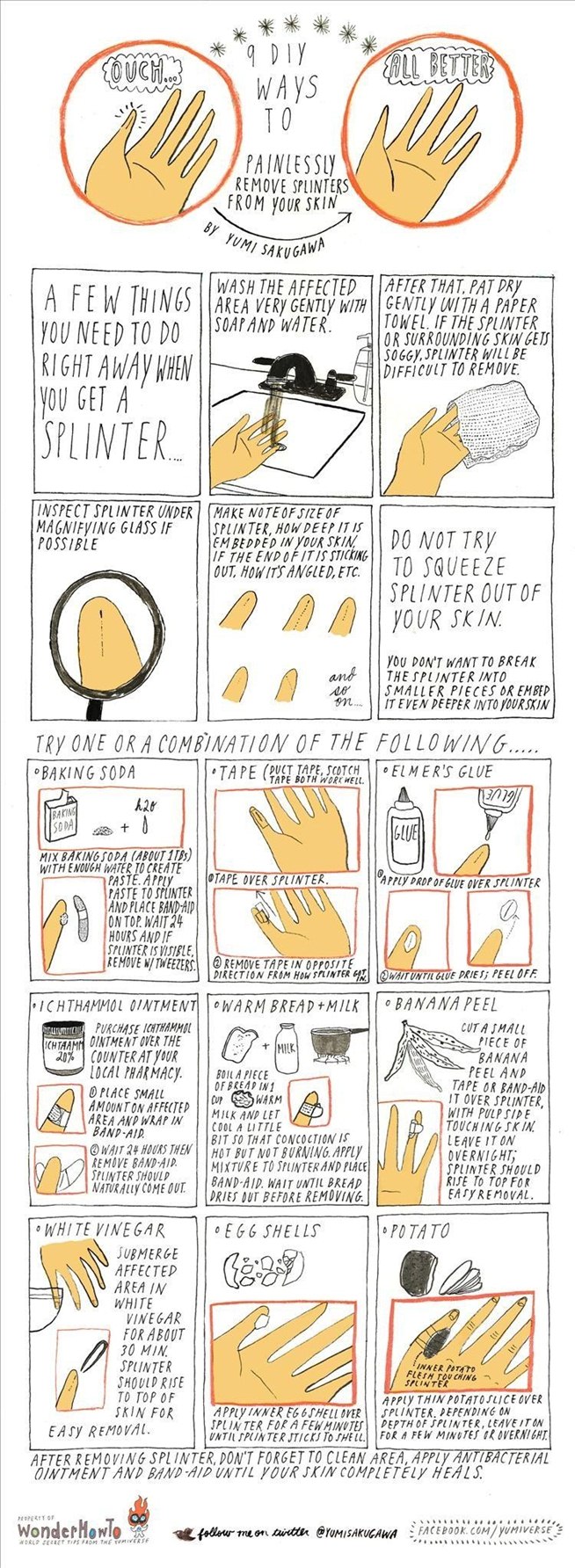
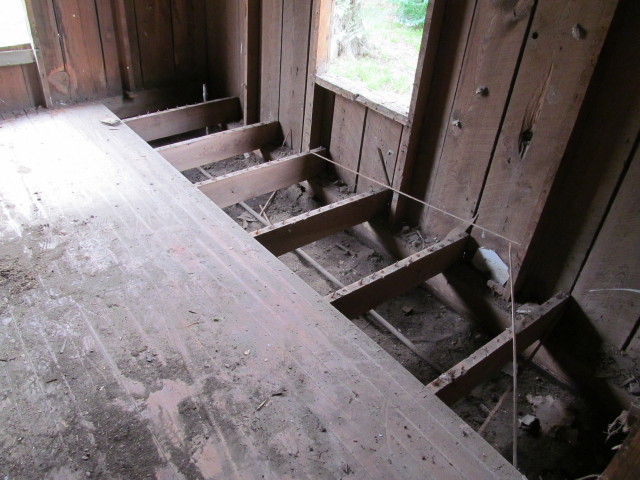
Hi Kim,
This is a great article you’ve written on safety. Mike and I observed this as well when we were “deconstructing’ and remodelling the inside of our old home. You just can’t ignore the facts here, it’s not worth the consequences.
Good for you!
Hugs, Drue
PS…do you know about the other house next to the church yet? Would love to see inside it before it comes down.
Thanks, Drue. I had fun writing the article and I loved that splinter removal chart!
We are submitting a revised bid to the church as soon as we get a bid from our insurance agency. If we get the work, I’ll certainly let you know! It was great seeing you guys the other day. We’ll have to have you over for dinner soon. I’m embarrassed that we don’t have more home remodeling projects completely done … but I’m sure you can relate!
Hi Kim,
Yes, I do relate. We still have lots of “finish” work to do around here but life gets in the way. For the first 3 years we were here working on this house, we had no life, except for this house! Now we are both involved with other things, so now it’s difficult to get back to the house….but rest assured, we will get it done!
Keep in touch about the “new” house in mind.
Love and Hugs
very good tutorial, I’ve worked with all the above, loved the splinter info, cause I have had my share
Thanks, Heather! I loved that chart and had to share it. I’ll definitely be referring to it next time I get a splinter!